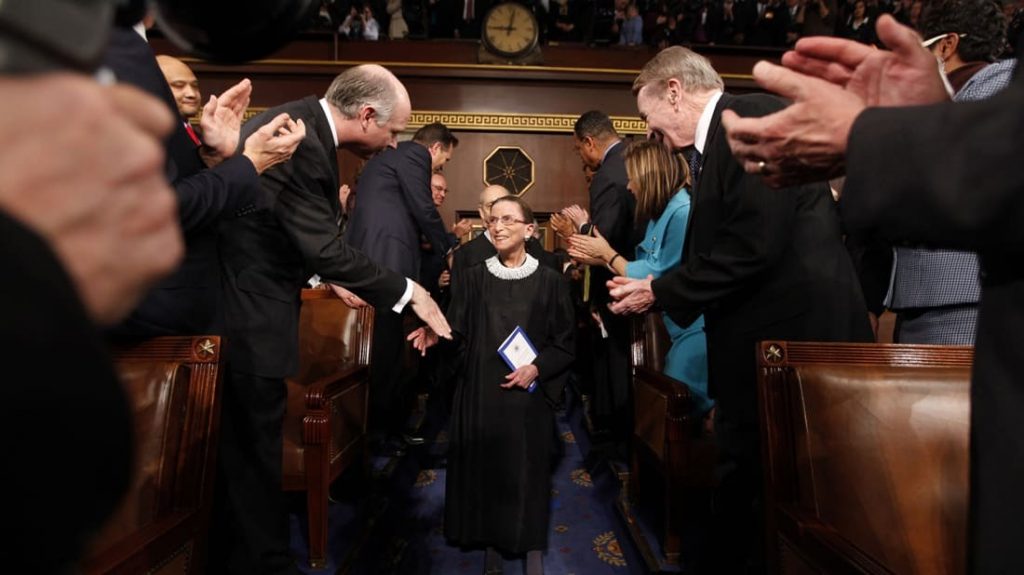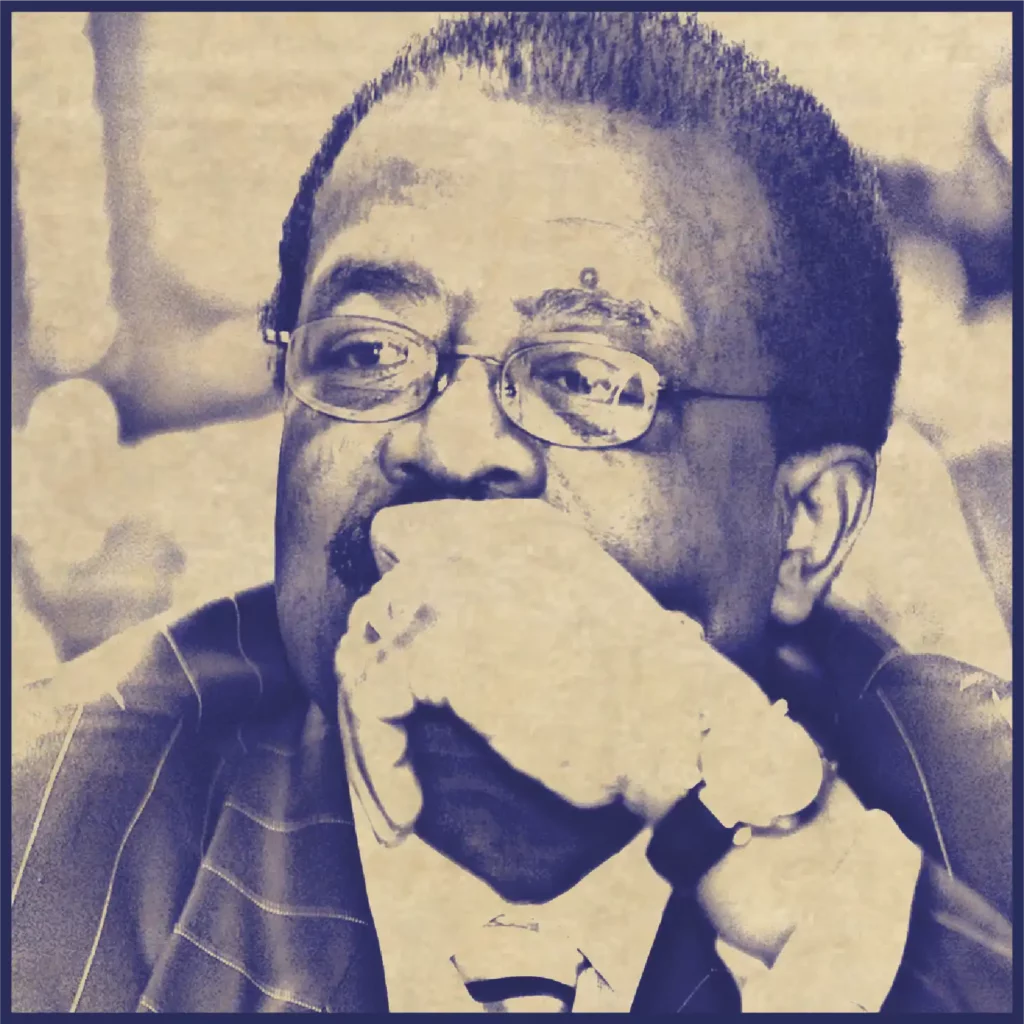Some remember her as an activist, and some may remember her as a feminist icon. However, Ruth Bader Ginsburg will forever be remembered as a champion of equality. She made it her life’s work to make sure that no matter what you look like or who you love that you will be treated as an equal in society and in the eyes of the law. She did this by eliminating gender-based stereotyping in legislation and regulations. Many consider RBG the architect of the legal fight for women’s rights in the 1970’s. Without a doubt, she changed the world for the better for American women. By the time she took her seat on the Supreme Court, she had revolutionized the legal rights of women that extended from their personal lives to the workplace. She became an icon to modern women of all ages, affectionately dubbing her the “Notorious RBG”, and will forever be memorialized for her contribution to women’s rights in America. As Justice Ginsburg always fervently reiterated from the Old Testament, “Justice, justice, thou shalt pursue.”
While many know her for her time on the Supreme Court, long before this she was impacting the legal realm and society as a whole from her work as a district judge as well as an attorney and professor. Born in 1933, by 1959 at 25 years old she was a law clerk to a judge in the US District Court.
· In the 60’s she was a research associate and professor at Columbia University and Rutgers School of Law respectively.
· In the 70’s she was general counsel for the ACLU and founded their Women’s Rights Project.
· In the 80’s she was appointed by President Jimmy Carter as Judge of the US Court of Appeals for the District of Columbia Circuit.
· In the 90’s she was sworn in as Supreme Court Justice filling the seat of Justice Byron White on the U.S. Supreme Court. She was the second woman ever on the Supreme Court. She stayed in this position for 27 years until her death.
At the ACLU Women’s Rights Projects, Ginsburg argued 6 and won 5 landmark Supreme Court cases in the 1970’s.
RBG got her law degree from Columbia Law School in 1959 after attending Harvard Law School from 1956-1958. She was able to obtain a clerkship in the U.S. District Court for the Southern District Court of New York from 1959-1961. Prompted from being disadvantaged by her status as a woman, Ginsburg passionately campaigned for gender equality. She changed millions of lives from her work as an attorney. Before her time on the bench, she argued six cases in front of the Supreme Court, and won five of these.
RBG was a pioneer of gender equality, working tirelessly to ensure that women were afforded the same treatment as their male counterparts in whatever context. Her fight against sex-based discrimination began far before her role on the Supreme Court. In her own experiences after graduating law school, she found that her sex was a barrier to advancing in her career. Although Ginsburg was first in her graduating class at Columbia School of Law, she did not get a job at any of the 12 initial firms she interviewed at. Ginsburg fought for much more than women’s rights. While she is definitely remembered as an icon for feminism. Many of Ginsburg’s legal victories were not based on sex discrimination. Ginsburg further fought for disabled people, undocumented people and the LGBTQ+ community. She focused on expanding voting rights.
Even Supreme Court Justices refused to take her as a clerk despite raving recommendations from professors at Harvard Law School. Ginsburg literally wrote the book on sex discrimination, which was published 1974. When RBG first began her legal crusade, legally, women were treated much differently than their male counterparts.
Ginsburg argued six landmark cases on gender equality before the U.S. Supreme Court. She utilized a gender-blind approach in her fight for women, believing that all groups of people were entitled to equal rights. Ginsburg argued Frontiero, Weinberger v. Wisenfeld, Califano v. Goldfarb, Durn v. Missouri, and Edwards v. Healy before the Supreme Court.
When Ginsburg began working with the American Civil Liberties Union, she began litigating sex discrimination cases. Her main strategy was to slowly take on winnable cases to eventually eliminate institutionalized discrimination against women with legal precedent.
RBG represented Sally Reed in 1971 who thought that she should be executor of her son’s estate opposed to her ex-husband. The court held that the state could not automatically prefer men over women to be executors of estates. The Justices stated that, “giving mandatory preference to one sex is the very kind oof arbitrary legislative choice forbidden by Equal Protection Clause of the Fourteenth Amendment. This was the first time the court struck down a state law due to gender discrimination. Ginsburg called the victory “a small guarded step.”
Ginsburg’s first big case was to challenge a law that barred Charles Moritz from taking a tax deduction for the care of his 89-year-old mother. Ginsburg’s husband called this case the “mother brief” going through a formula of asking the court to apply laws to both sexes. The government stated that this decision “cast a cloud of unconstitutionality over literally hundreds of federal statutes. These statutes would turn out to be the cases that Ginsburg would work tirelessly to overturn in the next decade.
The court decided in this landmark case argued by Ruth Bader Ginsburg on behalf of the ACLU, that a statute that imposes requirements on women but not on similarly situated men violates the Due Process Clause of the 5th amendment. The court plurality agreed that when applying a strict standard of review to sex-based classification, that the government interest in administrative convenience could not justify administrative practices. During this case, which was Ginsburg’s first oral argument before the Supreme Court, she quoted Sarah Grimke, a 19th-century abolitionist and suffrafette, stating, “I ask no favour of my sex. All I ask of our brethren is that they take their feet off our necks.” Ginsburg argued her case successfully and this case became a vital decision on the landscape of gender equality.
In this case argued by Ginsberg, the court found for her client Mr. Wisenfeld who was a widower. The court found that gender based distinction in Social Security Benefits does violate the Fifth amendment of the Due Process Clause. The court found unanimously that the purpose of social security benefits for the surviving spouse and children is to enable the surviving spouse to properly care for the children, regardless of the parent’s gender.
In this case, the court concluded that pregnant women were treated differently from nonpregnant persons. While the ACLU’s amicus curia brief alleged that pregnant women were often victims of sex discrimination, the court saw differently. However, after this, the organization continued lobbying and their efforts resulted in an amendment to Title VII that established that pregnancy discrimination in the workplace is considered sex discrimination is illegal.
With her work as an attorney fighting against sex discrimination, Aryeh Neier, the executive director of the ACLU stated, “Ruth was careful to build brick upon brick..

Before her time as a Supreme Court justice, Ginsburg was denied a clerkship from the very court. While highly recommended by her Harvard professor for the position of clerk for the Supreme Court, the justices were not ready to hire females and refused her entry. In 1980, President Jimmy Carter appointed her to the United States Court of Appeals where she served until her appointment to the US Supreme Court in 1993 by President Clinton. Ruth Bader Ginsburg shaped American history through her time as a judge. As a judge, Ginsburg began known as “The Great Dissenter” for her fiery dissents departing from the opinions of her fellow supreme court justices. In speaking of her dissents, Ginsburg stated, “I like to think most of my dissents will be the law someday.”
In 1996, Ginsburg continued her fight for gender equality under the 14th amendment. Ginsburg wrote the majority opinion, a 7-1 vote that the Virginia Military Institute could no longer be an all-male institution. Virginia argued not only that women were not suited for VMI’s rigorous training, but also that a separate women’s only military program was sufficiently equal. The court disagreed. Ginsburg said “Reliance on overbroad generalizations…estimates about the way most men or most women are, will not suffice to deny opportunity to women whose talent and capacity place them outside the average description.” This case established a new standard of review for sex discrimination cases.
This landmark case allowed people with mental disabilities to live in their communities under the Title II of the Americans with Disabilities Act. (ADA) Two Georgia women were help in isolation for years at a mental hospital following their initial treatments, even after being medically cleared to move to a more community based setting. The court held that Georgia had violated the community mandate. Ginsburg reinforced the idea that “unjustified isolation perpetuates assumptions that persons so isolated are incapable or unworthy of participating in community life.”
This landmark Nebraska case made it so that under the Fourteenth Amendment, a state cannot pass an anti-abortion law that does not include an exception for the health of the mother.
Lily Ledbetter filed suit against Goodyear Tire and Rubber Company for sex discrimination that resulted in unequal compensation. While the claim was barred, Ginsburg wrote a dissent that the majority’s ruling was out of touch with the realities of wage discrimination, missing the true meaning of Title 9, the statutes “broad remedial purpose” and suggested that the Legislature correct the Court’s reading of Title 9. This dissent led to the Lilly Ledbetter Fair Pay Act of 2009, which amended the Civil Right Act of 1964 to determine when an unlawful employment practice occurs regarding discrimination on the basis of sex. After this Act was passed, many related that Ginsburg understood that even if the Supreme Court majority would not offer protection sought, that the judges in the minority could still call for Congress to resolve this grievance outside of the boundaries of the courtroom.
The court held in this case that the restrictions mandating southern states get approval before changing voting requirements was outdated. Ginsberg dissented and claimed that “throwing out preclearance when it has worked and it continuing to work to stop discriminatory changes is like throwing away your umbrella in a rainstorm because you are not getting wet.”
Ginsburg received support from all the justices on this case with her bottom line argument that extending marriage rights would not weaken the institution of marriage. She argued that all of the incentives and benefits that marriage affords would still be available, therefore nothing was being taken away from heterosexual couples. These couples, she argued, would have the same incentives to marry and benefits from marriage that they currently have.
In 1999, after her time as an attorney, judge and Supreme Court Justice, Ginsburg received the Thurgood Marshall Award for her contributions to gender equality and civil rights.
Ginsberg battled cancer throughout her life, and never missed a day of oral arguments even while she was undergoing chemotherapy. Ginsberg proved through this journey that she was a force to be reckoned with.
RBG left quite the legacy when she died at the age of 87, September 18, 2020 from complications from metastatic pancreatic cancer. Ginsburg shaped the lives of modern American women through her progressive opinions. As her career as an attorney and judge has taught us, Ginsburg stated, “Real change, enduring change, happens one step at a time.”
Resources:
https://www.cnn.com/2013/03/07/us/ruth-bader-ginsburg-fast-facts/index.html
https://achievement.org/achiever/ruth-bader-ginsburg/
https://www.goodhousekeeping.com/life/g34111816/ruth-bader-ginsburg-accomplishments/
https://www.history.com/topics/womens-history/ruth-bader-ginsburg
https://www.aclu.org/other/tribute-legacy-ruth-bader-ginsburg-and-wrp-staff
In Memory of Justice Ruth Bader Ginsburg (1933-2020)
Contact us today for a Free Consultation





